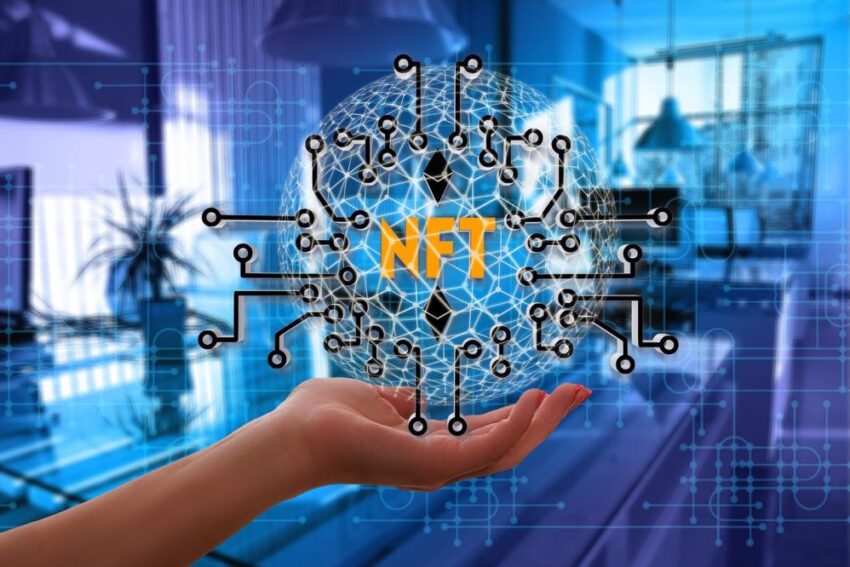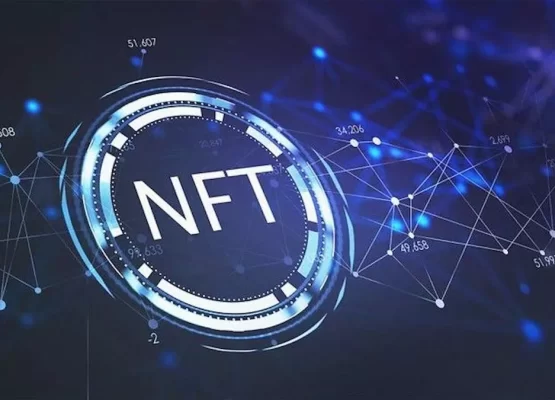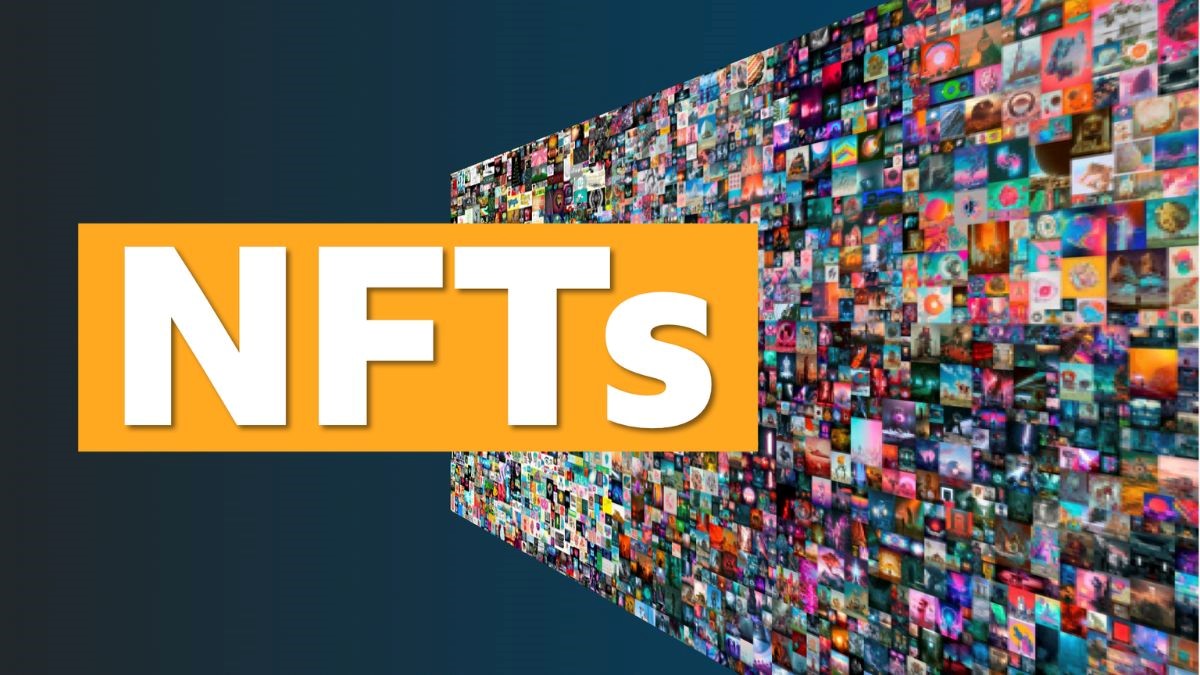Introduction to NFTs and Blockchain Technology
NFTs, or non-fungible tokens, are digital assets that represent ownership of unique items, such as art, music, videos, and other types of creative content. NFTs are based on blockchain technology, which is a distributed, decentralized ledger that records transactions in a transparent and secure manner.
Blockchain technology enables the creation of NFTs by providing a way to verify ownership and authenticity of digital assets. Each NFT is a unique identifier that is stored on the blockchain and cannot be replicated or altered. This provides creators with a way to monetize their digital content and collectors with a way to invest in rare and one-of-a-kind items.
NFT marketplaces use blockchain technology to facilitate the buying and selling of NFTs. The ownership of NFTs is transferred through smart contracts, which are self-executing contracts that automatically enforce the terms of an agreement. This provides security and transparency in transactions and eliminates the need for intermediaries.
Overall, the use of blockchain technology in NFT marketplaces provides a new way for creators to monetize their digital content and for collectors to invest in unique and rare items in a secure and transparent manner.
Understanding the workings of NFT marketplaces
NFT marketplace development involves creating a platform where creators can list and sell their NFTs, and collectors can buy and trade them. The development of an NFT marketplace involves several key components, including:
- User interface: The user interface of an NFT marketplace should be intuitive and easy to use. It should allow creators to list their NFTs and set a price, and collectors to browse, search, and purchase NFTs.
- Wallet integration: An NFT marketplace should integrate with a cryptocurrency wallet to allow users to store, send, and receive cryptocurrency. This is necessary for buying and selling NFTs, as they are typically purchased with cryptocurrency.
- Smart contracts: Smart contracts are used to enforce the terms of transactions on an NFT marketplace. They ensure that NFTs are transferred securely and that creators receive payment for their NFTs.
- Token standards: NFT marketplaces typically use token standards, such as ERC-721 or ERC-1155, to define the properties and functionality of NFTs.
- Security: Security is a crucial aspect of NFT marketplace development. Measures such as two-factor authentication, encryption, and regular security audits should be implemented to ensure the safety of user data and funds.
In summary, NFT marketplace development involves creating a user-friendly platform that integrates with cryptocurrency wallets, uses smart contracts to enforce transactions, and prioritizes security to create a safe and transparent marketplace for creators and collectors.
Benefits of using blockchain technology in NFT marketplaces
There are several benefits of using blockchain technology in NFT marketplaces, including:
- Transparency: Blockchain technology allows for a transparent and public ledger of transactions, which can increase trust and reduce the risk of fraud.
- Security: Transactions on blockchain networks are secured through complex cryptographic algorithms, making them difficult to hack or manipulate.
- Decentralization: Blockchain networks are decentralized, meaning there is no central authority or intermediary controlling the network. This eliminates the need for intermediaries and reduces transaction fees.
- Immutable Records: Once a transaction is recorded on the blockchain, it cannot be altered or deleted. This ensures that the ownership and authenticity of NFTs can be verified.
- Ownership: NFTs provide proof of ownership and provenance, making it easy for creators to sell their unique digital assets and collectors to verify ownership of their rare items.
- Smart contracts: Smart contracts can be used to automate transactions and enforce the terms of agreements between buyers and sellers, reducing the risk of fraud and increasing efficiency.
Overall, the use of blockchain technology in NFT marketplaces provides a secure, transparent, and efficient way for creators to monetize their digital content and for collectors to invest in unique and rare items. It provides a decentralized system that eliminates the need for intermediaries and reduces transaction fees, which can benefit both creators and collectors.
The potential of blockchain technology for future developments in NFTs
Blockchain technology has the potential to drive future developments in NFTs in several ways, including:
- Fractional ownership: NFTs can be divided into smaller units, allowing for fractional ownership. This can increase accessibility for collectors and provide creators with a way to monetize their digital assets more effectively.
- Interoperability: The development of cross-chain protocols can enable the transfer of NFTs across different blockchain networks, allowing for greater interoperability and flexibility.
- Gamification: Blockchain technology can be used to create gamified experiences with NFTs, such as collectible card games, which can increase engagement and provide new revenue streams for creators.
- Sustainability: The development of sustainable blockchain networks, such as Proof of Stake (PoS), can reduce the energy consumption and environmental impact of NFTs and blockchain technology.
- Digital Identity: Blockchain technology can be used to create digital identities for creators and collectors, providing a way to verify their identity and authenticity.
- Metaverse Integration: NFTs can be used to represent virtual assets in a metaverse, such as virtual real estate, providing new opportunities for creators and collectors in the virtual world.
Overall, the potential of blockchain technology for future developments in NFTs is vast, and it is likely that we will see continued innovation and growth in this area. As blockchain technology evolves, so too will the possibilities for NFTs, creating new opportunities for creators and collectors in the digital space.
Challenges and limitations of blockchain technology in NFT marketplaces
While blockchain technology offers numerous benefits for NFT marketplaces, there are also several challenges and limitations that need to be considered, including:
- Scalability: Blockchain networks can struggle to handle high volumes of transactions, leading to slow transaction times and high fees. This can be a challenge for NFT marketplaces, where a large number of transactions can occur simultaneously.
- Environmental Impact: The energy consumption of some blockchain networks, such as Proof of Work (PoW), can have a significant environmental impact, which can be a concern for sustainability.
- User Experience: The complexity of blockchain technology can make it difficult for some users to understand and use NFT marketplaces, which could limit their adoption and growth.
- Interoperability: While interoperability is a potential benefit of blockchain technology, achieving it can be challenging due to differences in token standards and other technical issues.
- Regulation: The regulatory environment around NFTs and blockchain technology is still evolving, and there is uncertainty around how governments and regulatory bodies will treat these assets in the future.
- Security Vulnerabilities: Despite the high level of security offered by blockchain technology, there are still potential vulnerabilities that can be exploited by attackers, such as smart contract vulnerabilities or hacking attempts.
Overall, while blockchain technology has great potential for NFT marketplaces, it is important to consider the challenges and limitations as well. By addressing these issues, developers and market participants can create a more robust and sustainable ecosystem for NFTs and blockchain technology.
Future prospects of NFT marketplaces and blockchain technology
The future prospects of NFT marketplaces and blockchain technology are exciting and promising, with potential for continued growth and innovation in the years to come. Here are some of the key future prospects for these technologies:
- Expansion into new markets: While NFTs have gained significant attention in the art world, there are opportunities for these assets to be used in other industries such as gaming, music, and sports. As these markets continue to evolve and adopt blockchain technology, we can expect to see increased adoption of NFTs in these areas.
- Increased adoption: As awareness of NFTs and blockchain technology grows, we can expect to see increased adoption of these assets and platforms, leading to increased liquidity and more opportunities for creators and collectors.
- Improved interoperability: Interoperability between different blockchain networks is improving, allowing for easier trading and exchange of assets. This increased interoperability will lead to more liquidity and flexibility in NFT marketplaces.
- Enhanced user experience: As NFT marketplaces become more user-friendly, we can expect to see increased adoption and growth, with more users from diverse backgrounds participating in the ecosystem.
- Continued innovation: The potential for innovation in NFTs and blockchain technology is vast, with new use cases, applications, and technologies emerging regularly. We can expect to see continued innovation and growth in this area, driving the development of new business models, products, and services.
Overall, the future prospects of NFT marketplaces and blockchain technology are bright, with potential for continued growth and innovation in the years to come. While there are challenges and limitations to be addressed, the benefits of these technologies offer a compelling case for their adoption and use in a wide range of industries and applications.
Conclusion
In conclusion, NFT marketplaces and blockchain technology offer exciting opportunities for creators, collectors, and investors alike. These technologies provide a new way of owning and exchanging digital assets, creating a new ecosystem for artists and other creatives to monetize their work. Despite the challenges and limitations that come with these technologies, their benefits are significant, including increased transparency, security, and accessibility.
The future prospects of NFT marketplaces and blockchain technology are promising, with potential for continued growth and innovation in the years to come. We can expect to see increased adoption of NFTs in new markets, improved interoperability between different blockchain networks, enhanced user experience, and continued innovation driving the development of new business models, products, and services.
As these technologies continue to evolve, it will be important to address the challenges and limitations associated with them, including issues related to energy consumption, scalability, and accessibility. By doing so, we can ensure that NFT marketplaces and blockchain technology can be used to their full potential, creating a more inclusive and sustainable ecosystem for digital assets.



